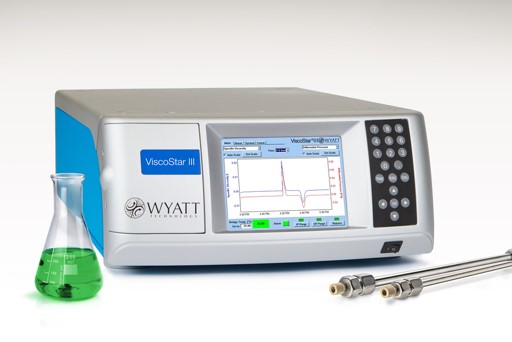Polymer characterization: viscosity is intrinsic
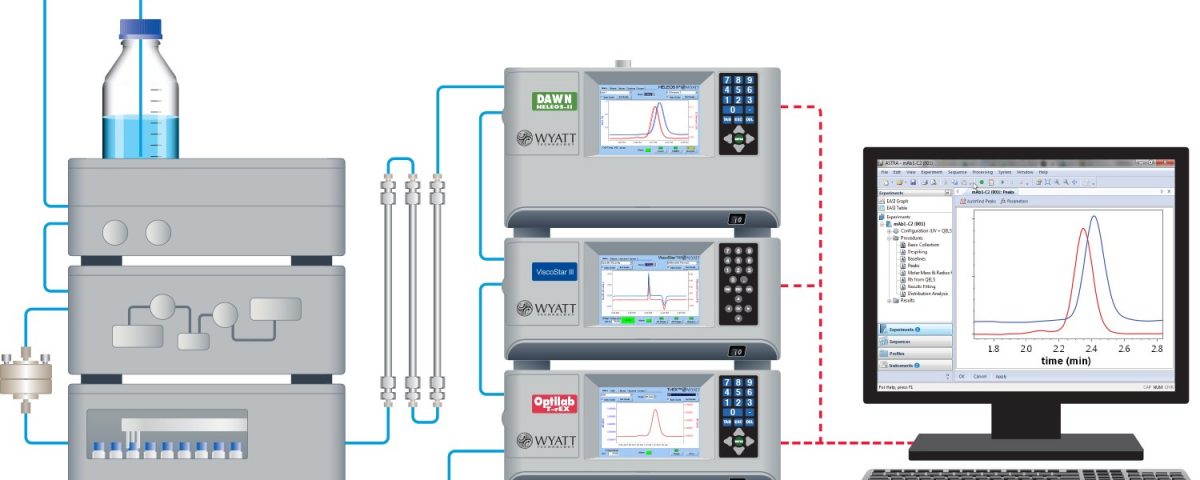
The centrality of multi-angle light scattering to polymer characterization is widely appreciated. SEC-MALS with a DAWN™ is the gold standard for determining reliable, accurate distributions of absolute molar mass and rms radius, without having to rely on column calibration, reference molecules that don’t elute like your samples, and assumptions about ideal conformation and column interactions. But once you have mastered SEC-MALS, what’s the next stage? How to obtain even deeper understanding of your macromolecules? And what are your options if SEC-MALS does not work for some of your samples?
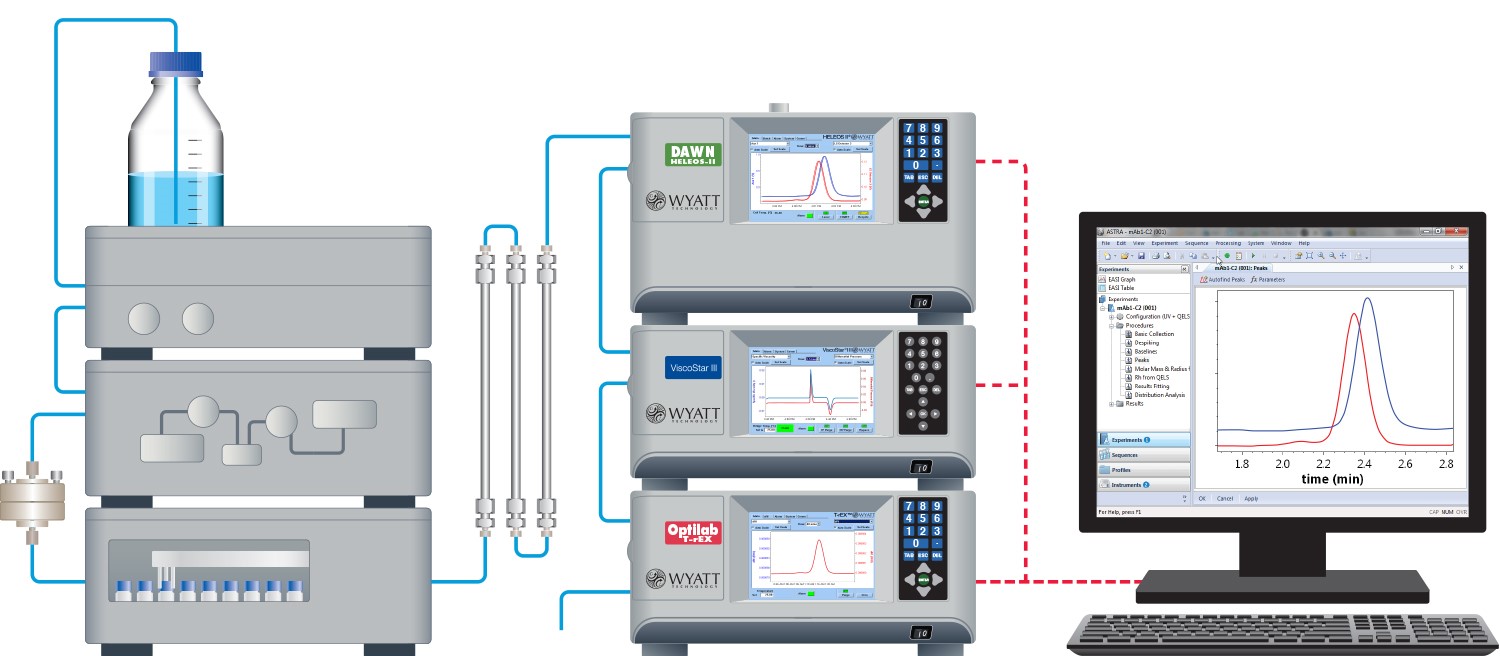
Beyond Molar Mass
Beyond molar mass, it’s the molecular structure and conformation that are the essential properties correlated to a material’s macroscopic behavior such as elasticity, viscosity, and thermal response. Branching analysis will shed light on the chemical reactions that went into the synthesis and functionalization of the molecule.
SEC-MALS alone can determine conformation and branching for the portion of the chromatogram bearing rg > 10 nm. A conformation plot, which specifies the dependence of size on molar mass, is shown in Figure 1. The slope dlog(rg)/dlog(M) conveys the polymer conformation as spherical, random coil, rod-like, etc. Comparison with a known linear polymer of the same type enables the calculation of branching ratios.
However, most polymers will have at least some fraction of the distribution smaller than the 10 nm rg cutoff and cannot be fully characterized by SEC-MALS. Of course, some polymers will fall entirely within the range of smaller rg and their conformations cannot even be partially characterized by SEC-MALS. That’s where differential viscometry shines.
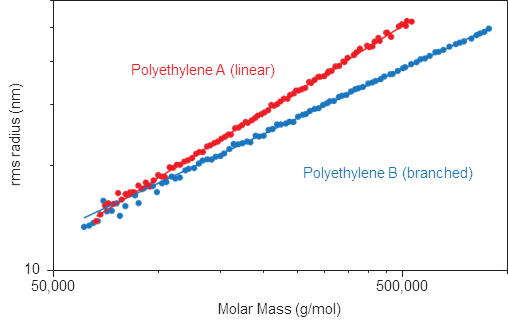
Figure 1. A MALS instrument measures rms radius vs. molar mass to reveal a polymer’s branching properties. Here, the branching of Polyethylene B is apparent by its significantly lower slope in relation to Polyethylene A, which is known to be linear.
Viscometry is key
Intrinsic viscosity (IV) is determined online by the ViscoStar™ differential viscometer, in conjunction with an Optilab™ for concentration. The combination of molar mass (determined by MALS) and IV (determined by viscometry) is analyzed to yield the hydrodynamic radius of the molecule rh, which can be substituted for rg in the conformation analysis.
A typical conformation plot using ‘rh(v)’, ASTRA's term for hydrodynamic radius from viscometry, is used with MALS-IV measurements. This plot conveys the same information as the log(rg)/log(M) plot. Since viscometry is quite sensitive, even for small oligomers and monomers, SEC-MALS-IV is the right choice for deeper characterization of polymers below about 1 MDa.
A very similar analysis by SEC-MALS-IV is the Mark-Houwink-Sakurada (MHS) plot (Figure 2), which shows the dependence of intrinsic viscosity on molar mass. MHS analysis yields the MHS parameters K and a; like dlog(rh)/dlog(M), a is indicative of conformation and both a and K are related to polymer-solvent interactions.
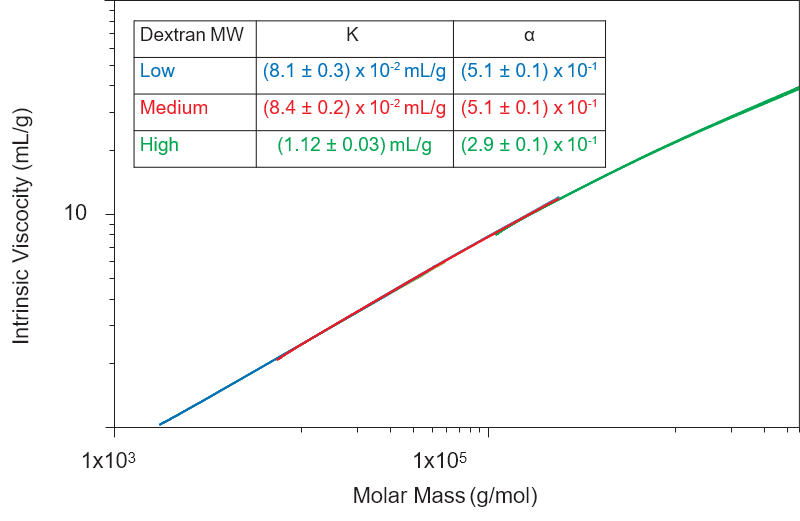
Figure 2. A Mark-Houwink-Sakurada (MHS) plot shows intrinsic viscosity as a function of molar mass—revealing the polymer conformation. The MHS plots of low, medium and high MW dextrans, shown here, indicate conformational change with increasing molar mass of the molecules.
Just how compact is that molecule?
When the molecule is larger than 10 nm, additional conformational analyses is supported in ASTRA™ by combining rh(v) with rg. In the Compactness Plot, the ratio rh(v):rg is displayed vs. elution volume. Alternatively, the aptly-named ‘rh(v) vs. rms radius plot’ displays just what it says it will…
In both cases, the relationship between rms radius and hydrodynamic radius is indicative of shape and compactness: a rg/rh ratio of 1 corresponds to a hollow shell, 0.77 to a uniform sphere, and ratios above 1 indicate elongated particles. A value below 0.77 often indicates a particle with a dense core decorated by long, sparse chains.
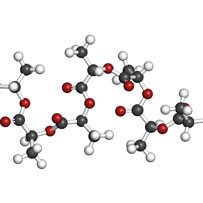
Let’s get back to molar mass
There are several instances where SEC-MALS can fail to produce reliable molar mass measurements, and SEC-IV can step in to save the day:
- ‘invisible’ polymers – when the polymer and solvent are closely matched in refractive index, dn/dc ~ 0 and very light will be scattered (if they are perfectly matched, dn/dc=0 and then the refractometer won’t work, either…)
- Fluorescent polymers – either you don’t have the fluorescence-blocking filters or the fluorescence is so close in wavelength to the laser that it cannot be fully blocked
- Nearly-opaque solvents or highly-absorbing samples – another case where little light will be scattered (if completely opaque then the refractometer won’t work here, either…)
Either Universal Calibration (for known linear, random-coil polymers) or the MHS molar mass calculation (where MHS parameters are known a priori) may be applied to determine polymer molecular weights without MALS. Not quite as absolute as MALS, but the next best option!
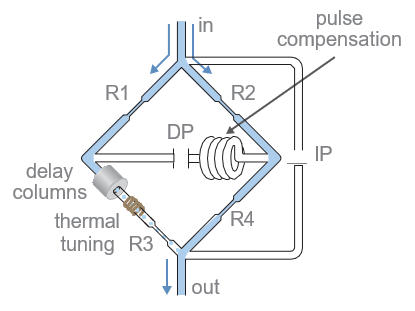
Only the best for our customers
And we are not exaggerating when we say that the ViscoStar is the absolute-best differential viscometer available! It’s all explained in the white paper, ViscoStar: Innovations in Online Viscometry for GPC. With 10x the sensitivity and 15x the dynamic range of competing instruments, temperature control that includes cooling as well as heating, and proprietary technology for eliminating pump pulsations, this instrument is the perfect addition to an existing SEC-MALS setup. It might even be a reason in itself to equip your lab with a new SEC-MALS-IV stack. Contact your local Wyatt rep or info@sales.wyatt.com for more information.
